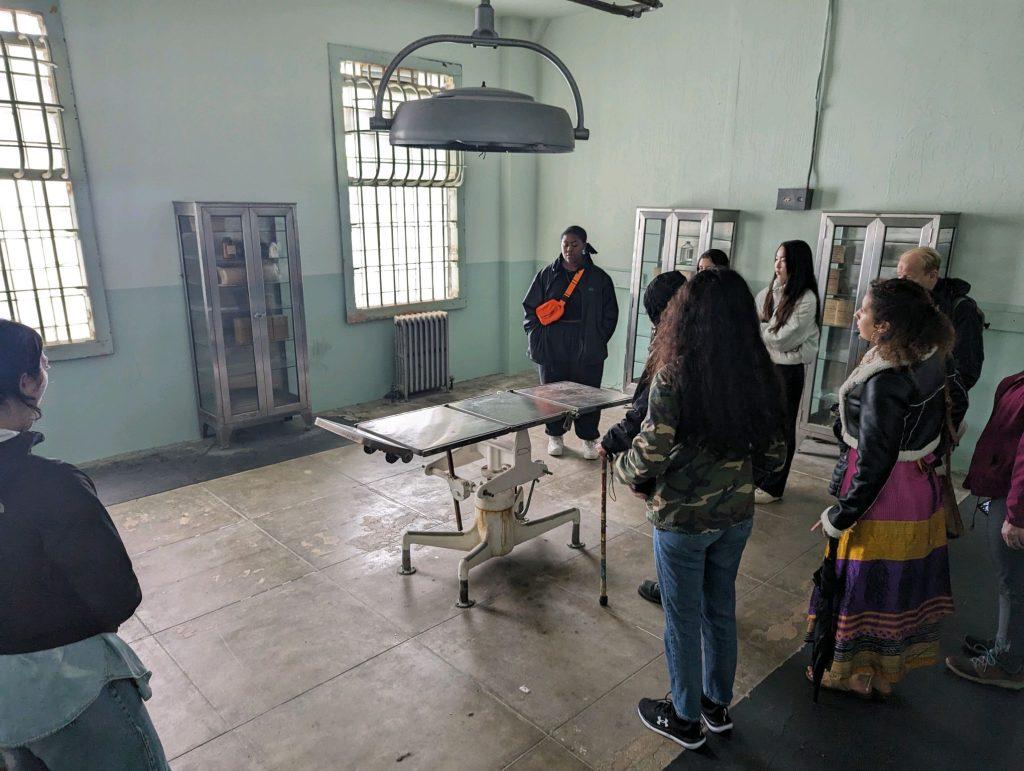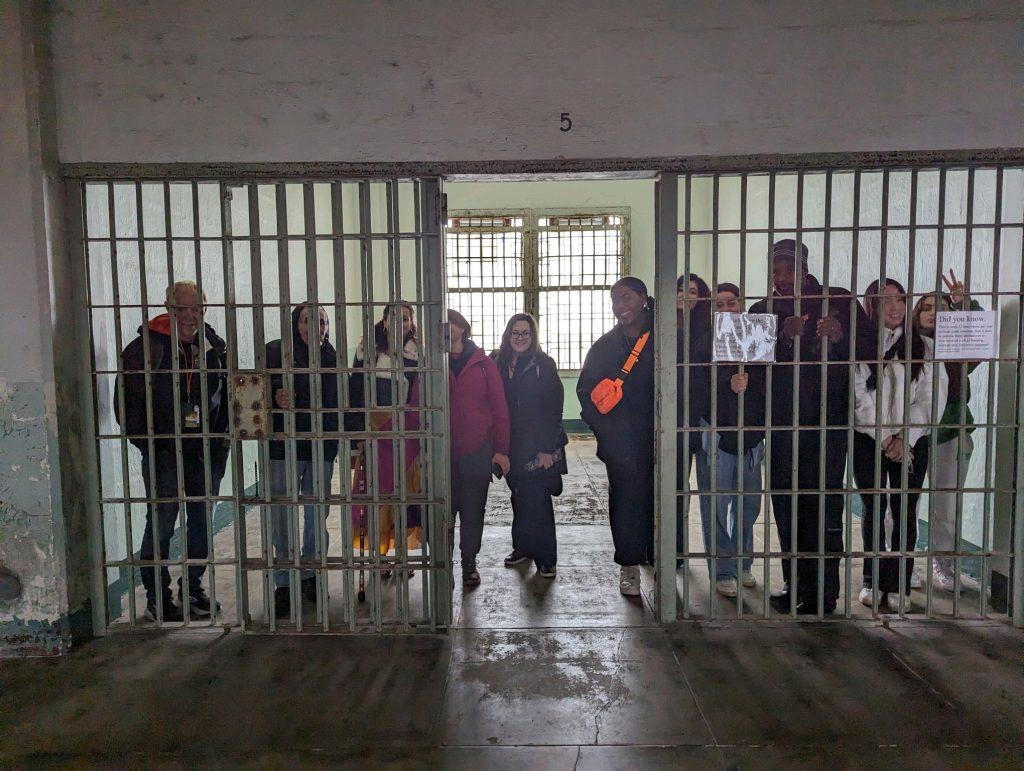
During the three-day weekend honoring Martin Luther King Jr. Day, over 50 students participated in Intercultural Affairs’ annual Year Two San Francisco Experience. While some joined for a subsidized trip to San Francisco, others sought to enrich their understanding of the world through hands-on experiences.
Regardless of their initial motivations, students enjoyed the experience, learned about historic civil rights movements and created fond memories.
The students and faculty departed Friday, Jan. 12, at 12 p.m. and returned Sunday, Jan. 14, around 10 p.m.
Students engaged in excursions to different historical sights of San Francisco depending on the movement group they chose. The movements explored in 2024 were the Red Power movement, the Black Power movement, the LGBTQ+ movement, the Women’s Liberation Movement and the AAPI Movement.
A common misconception about school trips is that one must attend with friends to find the experience fun. Junior Maya Ozbeck and Sophomore JJ Krasnick, two students who signed up without knowing anyone, said they still found the program enjoyable.
Red Power Movement

Maya Ozbeck said she applied with the prospects of exploring San Francisco and meeting new people. She was in the Red Power Movement student group which went to Alcatraz Island to learn about the fight for Native American civil rights.
It is a popular notion that Alcatraz Island is solely an abandoned maximum-security prison. Alcatraz Island’s historical significance to Native Americans was new information to Ozbeck, she said.
Prior to colonization, Alcatraz Island was within the territory of the Ramaytush Ohlone tribe, according to the National Park Service. Less than a century later, the island imprisoned Native American elders who resisted federal policies mandating their children to attend boarding schools.
Congress passed termination policies in 1953 confiscating Indigenous land, according to the National Park Service. Afterward, Native Americans from tribes all over relocated to San Francisco.
After the Alcatraz Island prison decommissioned, Native American activists in San Francisco began occupying Alcatraz in 1969, according to Berkeley News. They successfully captured the attention of the general public and media, and with their new platform, the activists demanded change in the federal government’s treatment of Native Americans.
Ozbeck said it was interesting to learn the history behind the occupation of Alcatraz. She said her biggest takeaway from the experience was becoming more mindful of Native American history.
“My boyfriend is Native American, so it’s really important to me to learn about his history and his culture,” Ozbeck said.
On Alcatraz Island, Ozbeck and the other students in her group met Eloy Martinez, a prominent Native American who occupied Alcatraz Island in 1969. Martinez guided them to a Red Power exhibit to discuss the history of the Red Power Movement; afterward, an Alcatraz Island park ranger gave the students an in-depth tour of the prison facility.

Ozbeck’s favorite part of the trip was exploring San Francisco at night which reminded her of her hometown of Istanbul, Turkey, with its big-city feel, she said. She dubbed San Francisco the “New York of the West Coast.”
Ozbeck said she enjoyed the delicious food in the city and the luxurious accommodations of the hotel where they stayed. She also appreciated the opportunity to sit down and engage in debriefing discussions where students from all five movements exchanged diverse perspectives and ideas.
Ozbeck said she recommends the trip to other students.
“Saying yes to a new experience even though you won’t know anyone there — it’s still gonna be really fun,” Ozbeck said.
AAPI Movement
JJ Krasnick also said great things about the program. Krasnick chose the AAPI movement group to connect to his Asian heritage.
Krasnick said the AAPI movement group took to Japantown, where they visited a Japanese cultural center, the Peace Pagoda in Peace Plaza and a historical landmark dedicated to the internment of Japanese Americans during World War II.

“It’s one thing to read about it and see it, but it’s another to actually live it and just be there,” Krasnick said. “So I think that also just helped me really connect with it more than I originally would have just by reading a textbook or watching a video.”
Krasnick said his biggest takeaway from the experience was learning the importance of collective action for bringing change. He found it memorable to get to know all the different people on the trip.
Pepperdine could improve the educational experience by including other movements, Krasnick said. One possible movement to include would be the Disability Rights Movement, which especially hits home for him.
“I have a twin sister, and she has an intellectual and physical disability,” Krasnick said. “That’s something big for me — just raising awareness for that because they don’t really have a voice or anything.”
The Disability Rights Movement also has roots in San Francisco, according to Disability Rights Florida. On April 5, 1977, the historic 504 Sit-in occurred in San Francisco, when over 100 activists from the Disabilities Rights Movement occupied the Health, Education, and Welfare building and demanded greater accessibility and accommodations for disabled people.
Krasnick, like Ozbeck, encourages other students to go on the trip. He was able to make new friends, learn new perspectives and simply have a fun time.
“Just try and keep an open mind about everything,” Krasnick said. “I think that’s when people learn best — when you just have an open mind.”
___________________
Follow the Graphic on X: @PeppGraphic
Contact Sophia Luo via email: sophialuo.luo@pepperdine.edu
